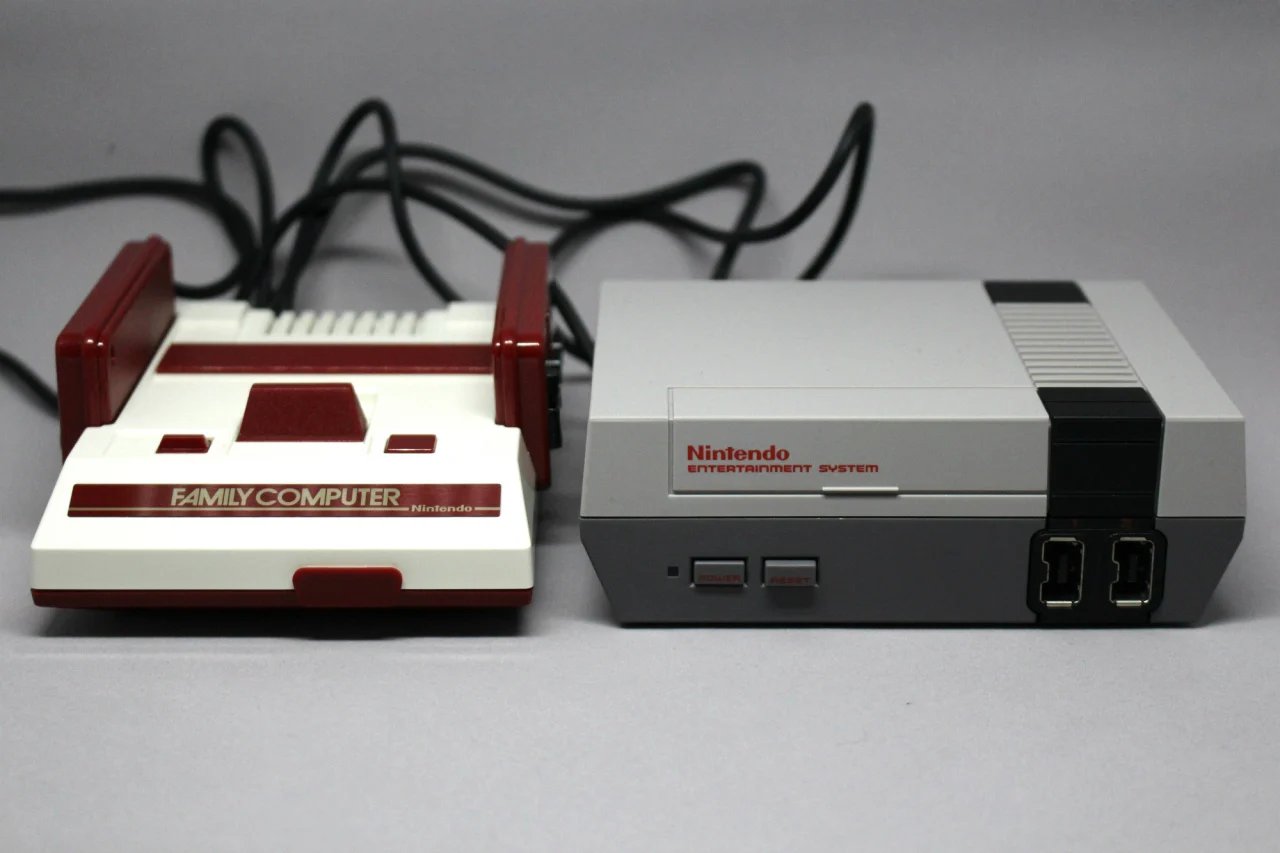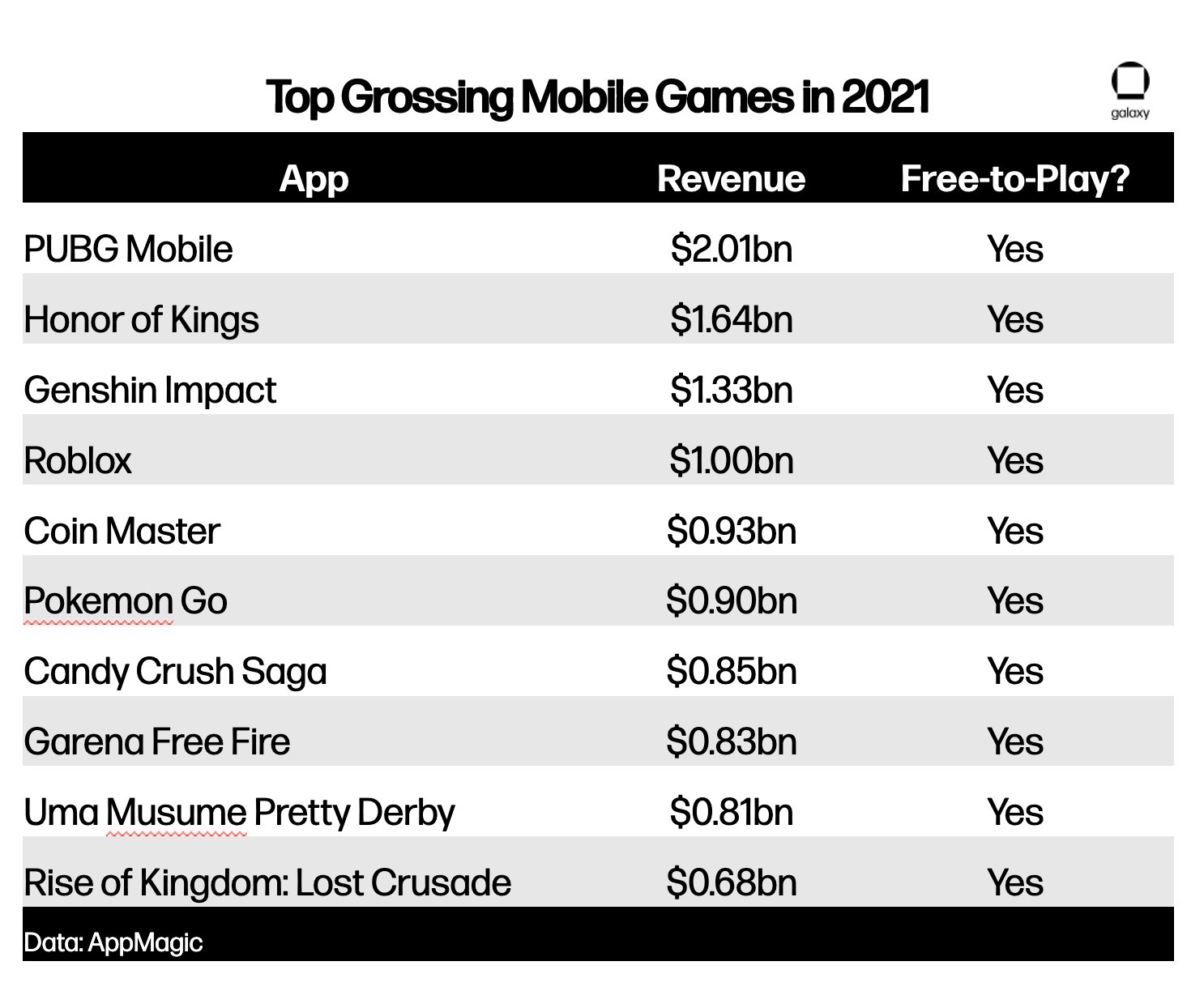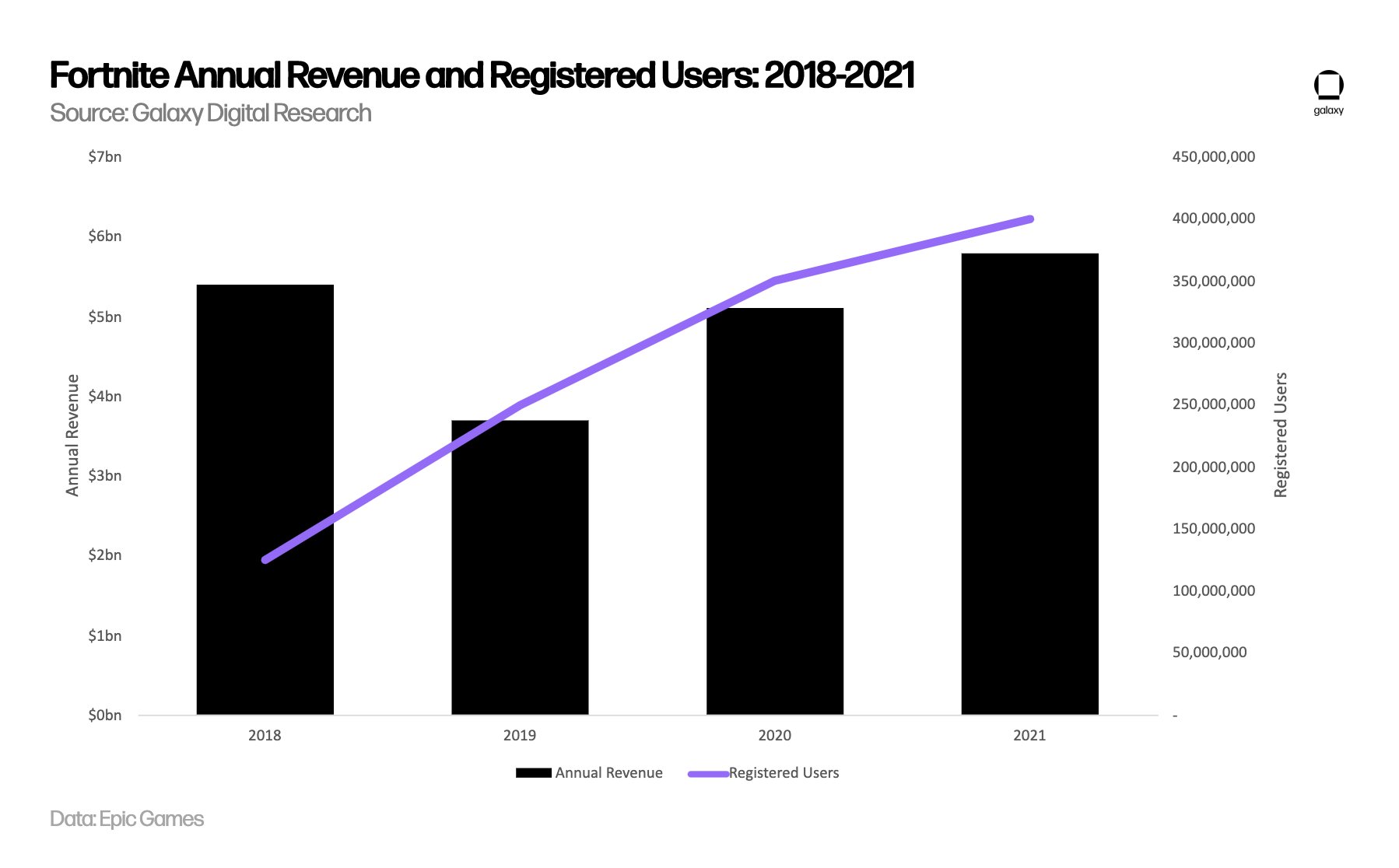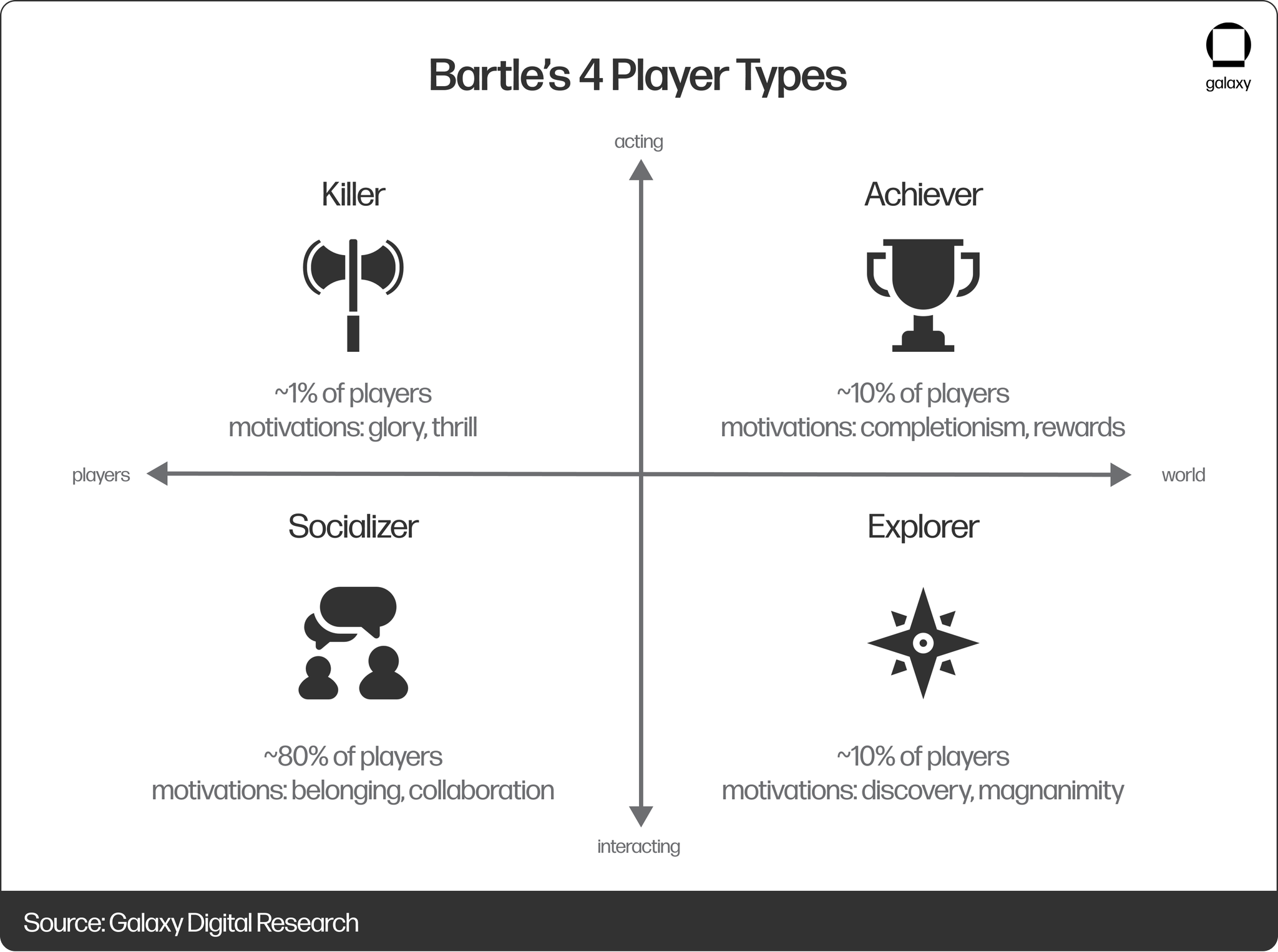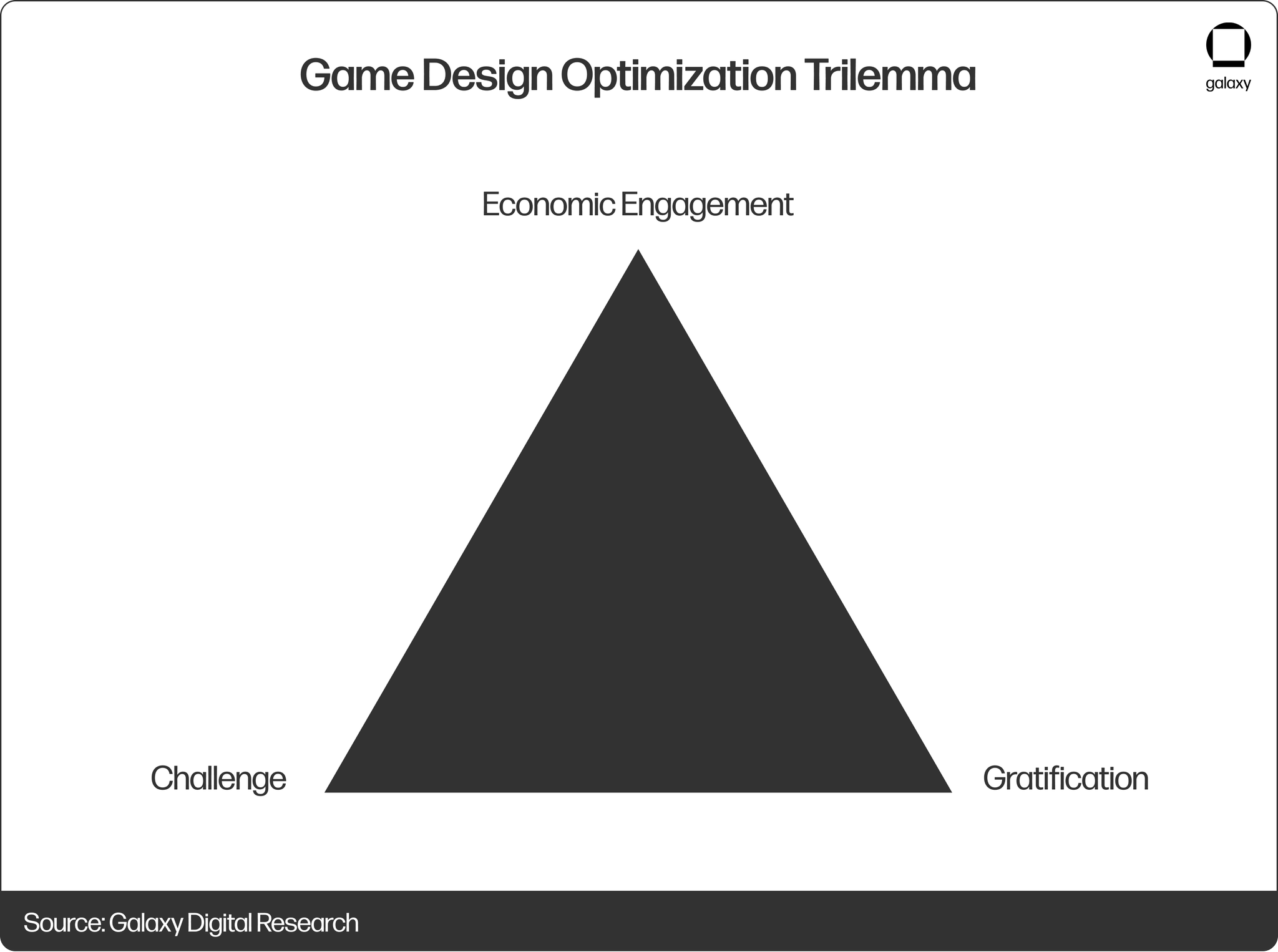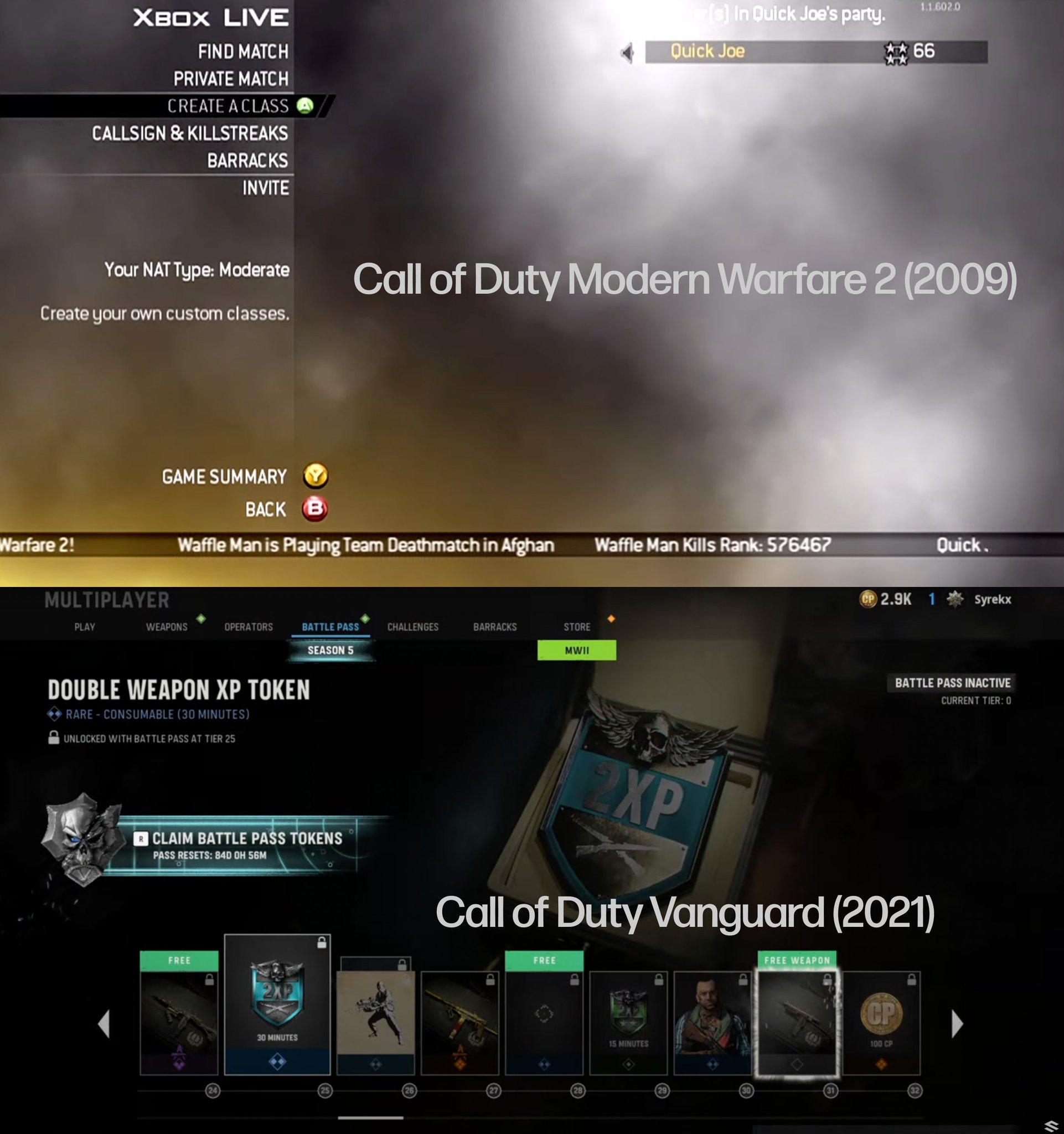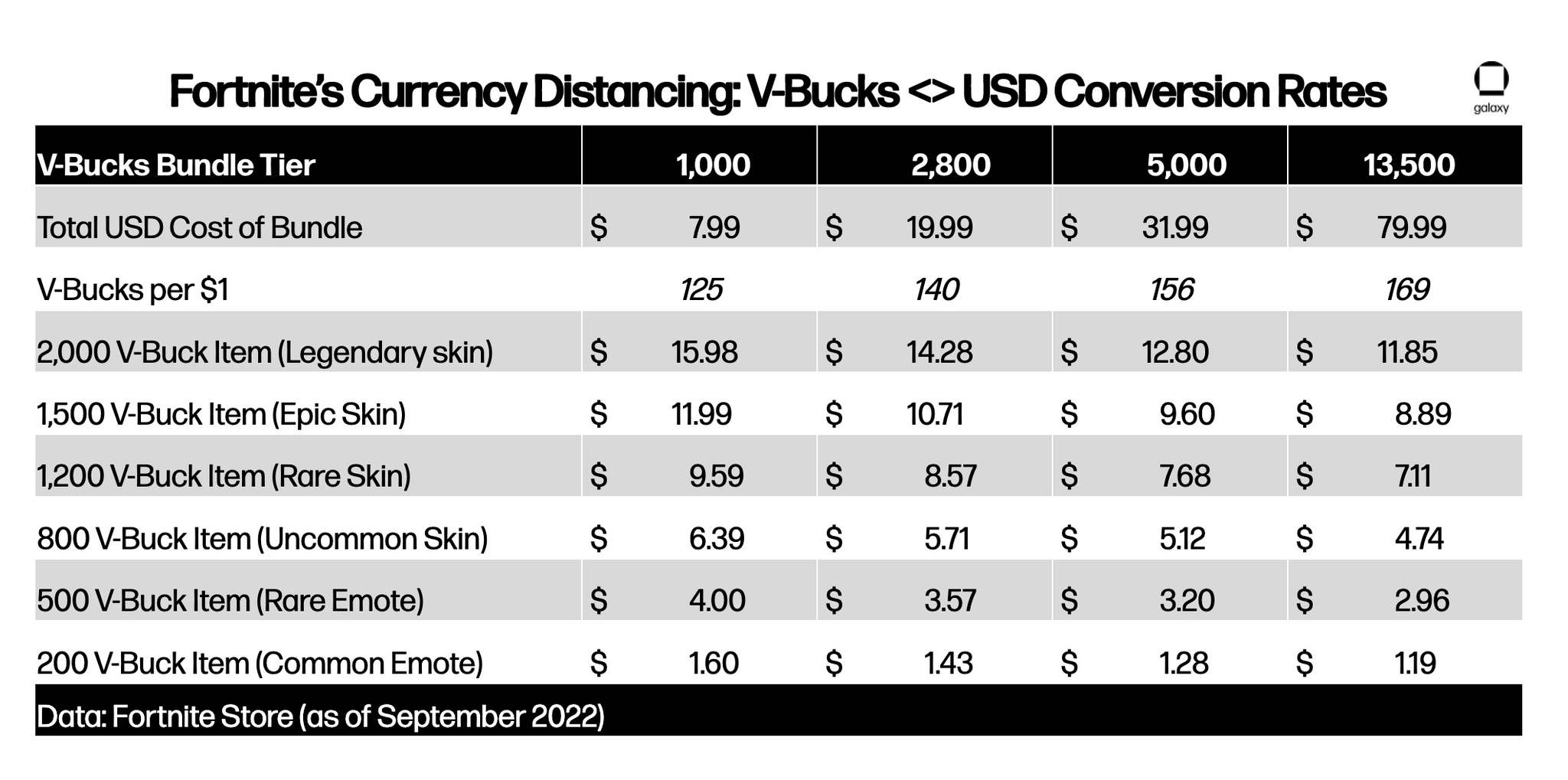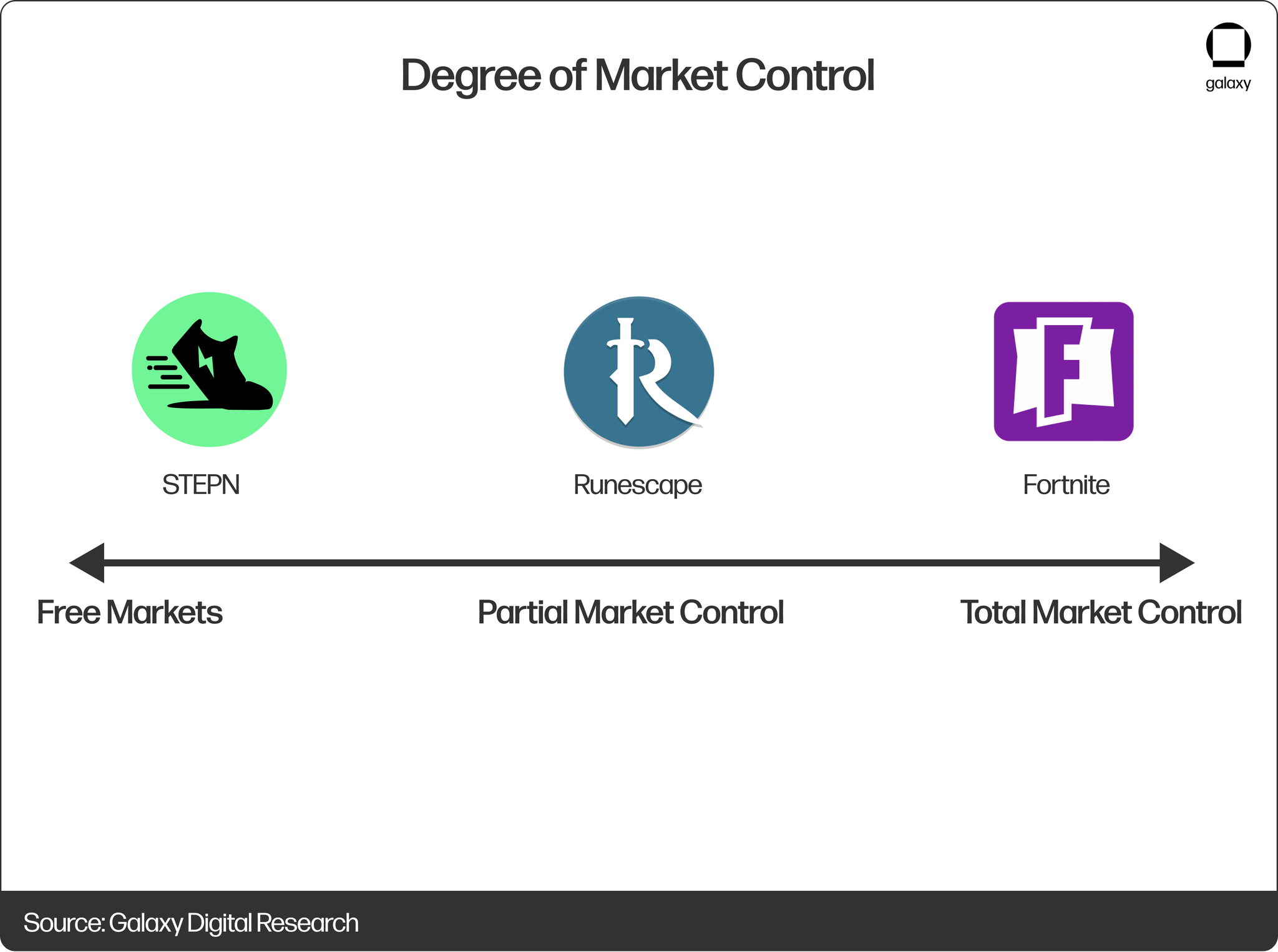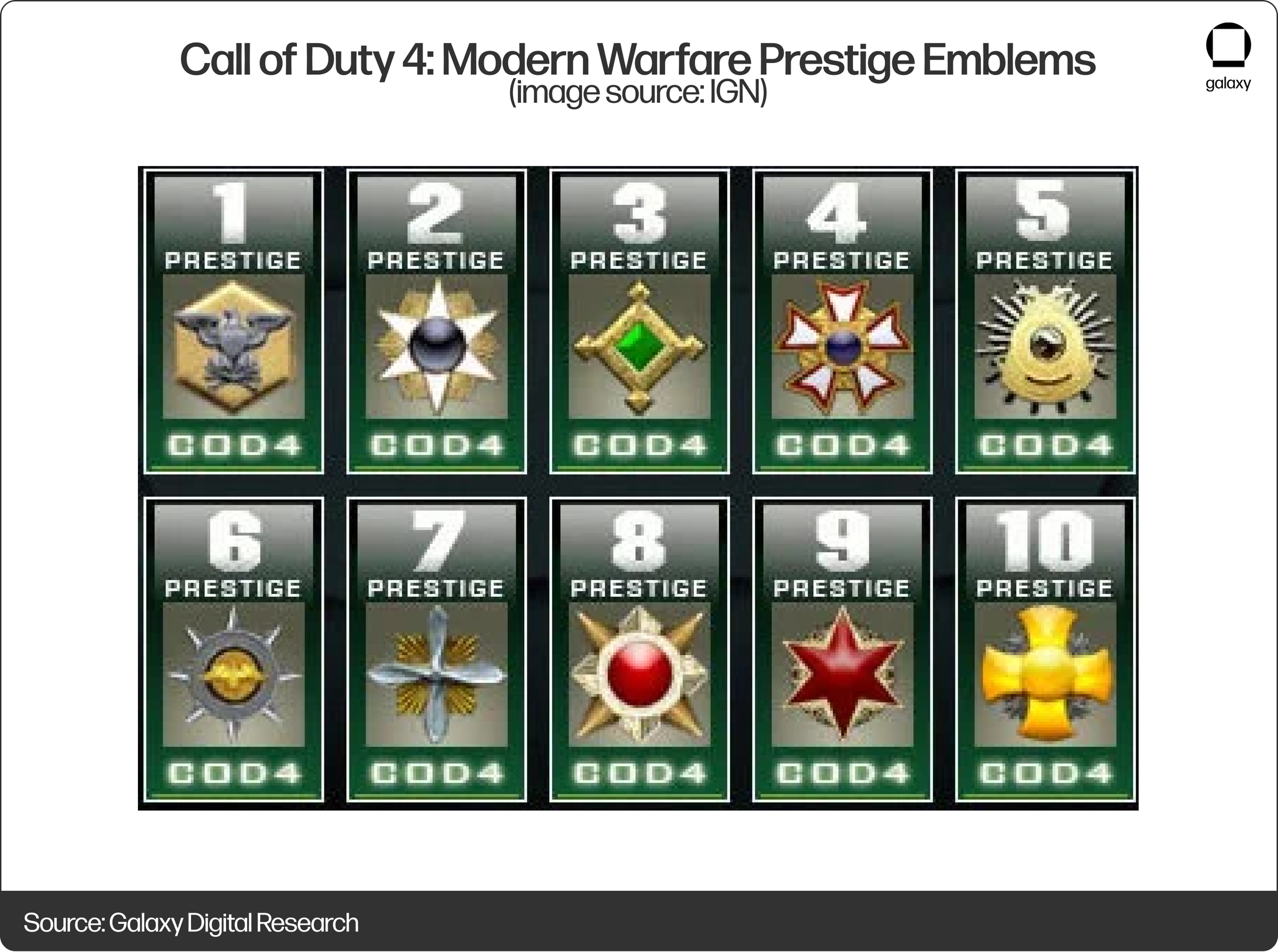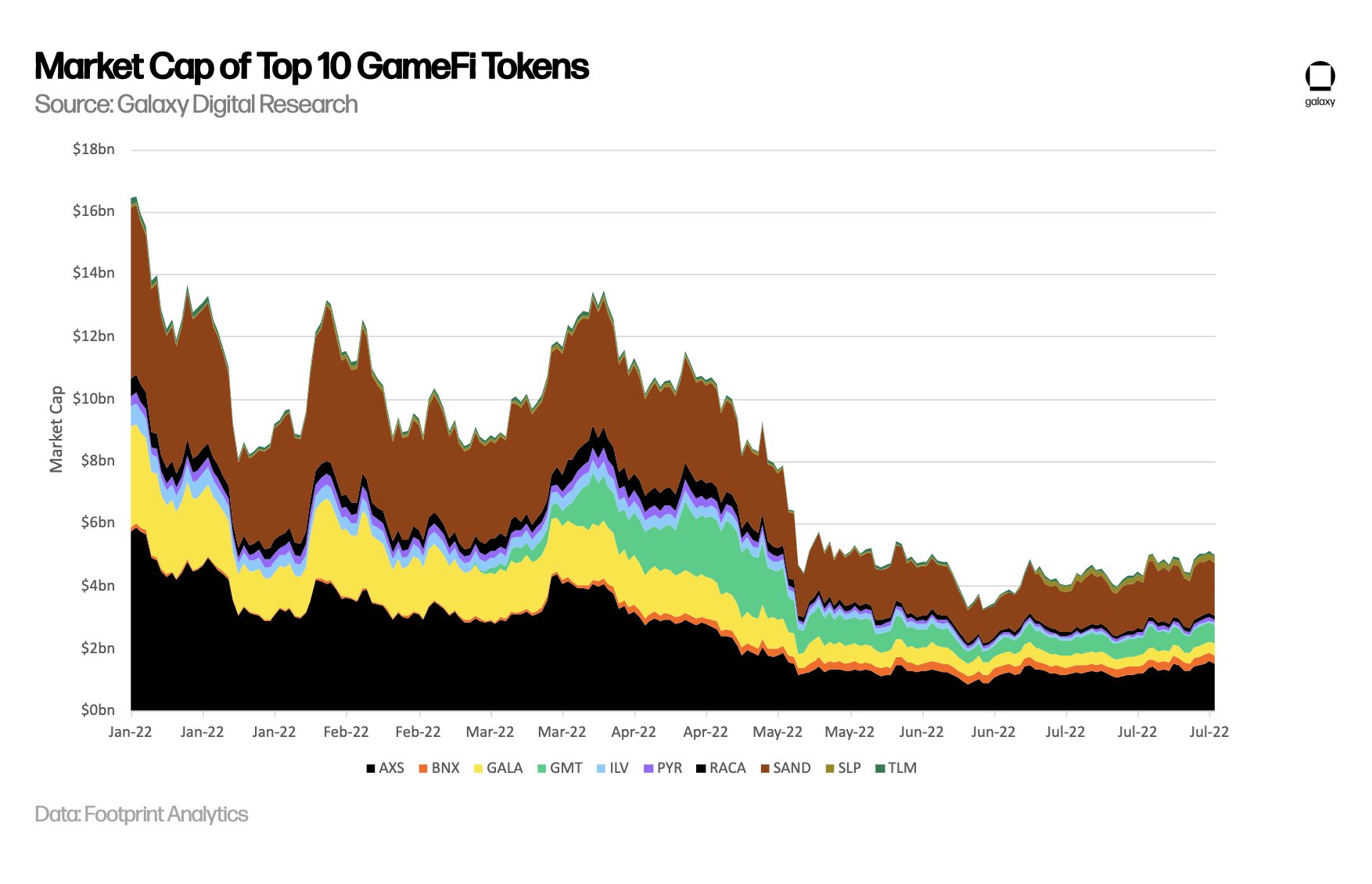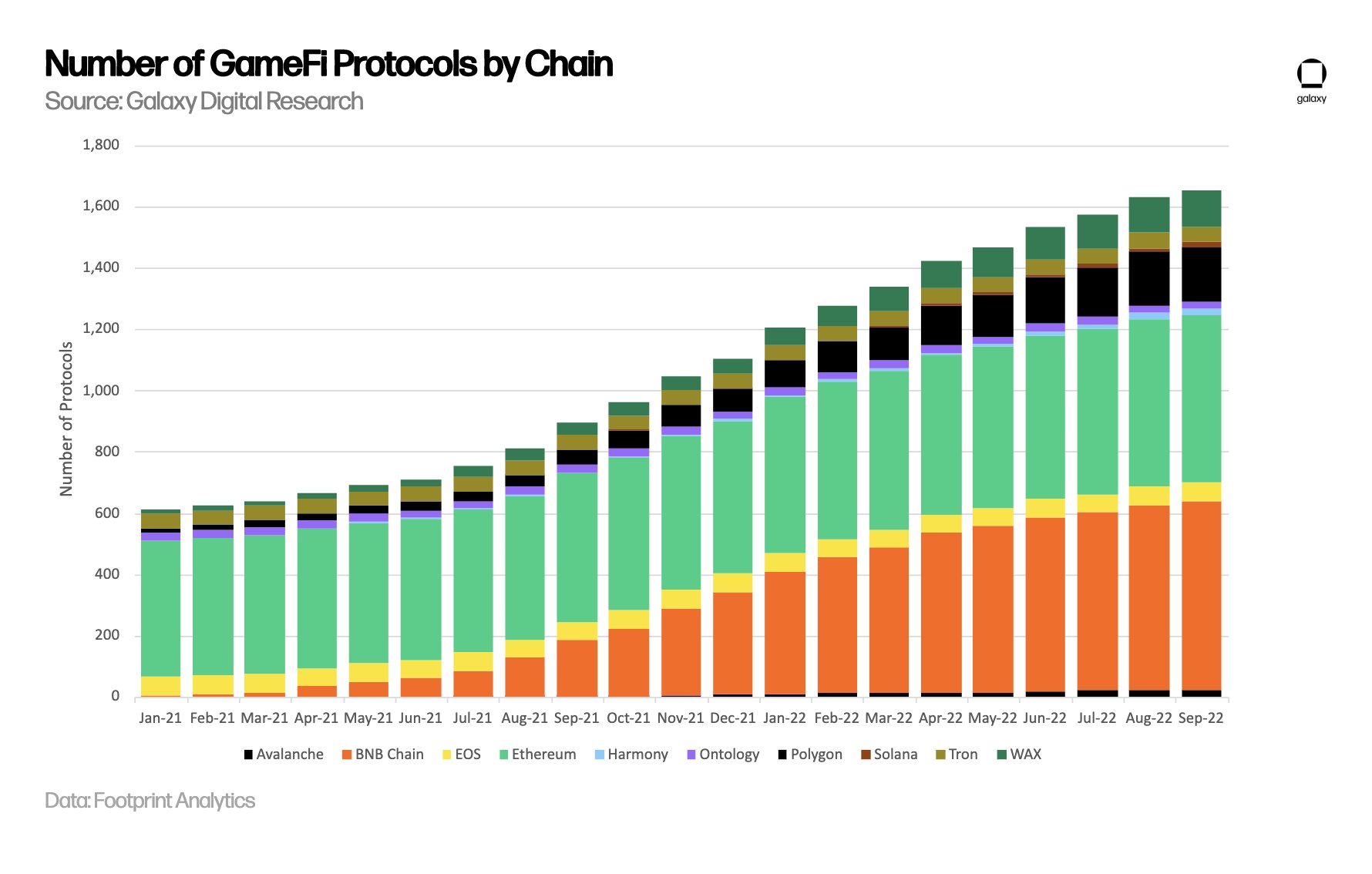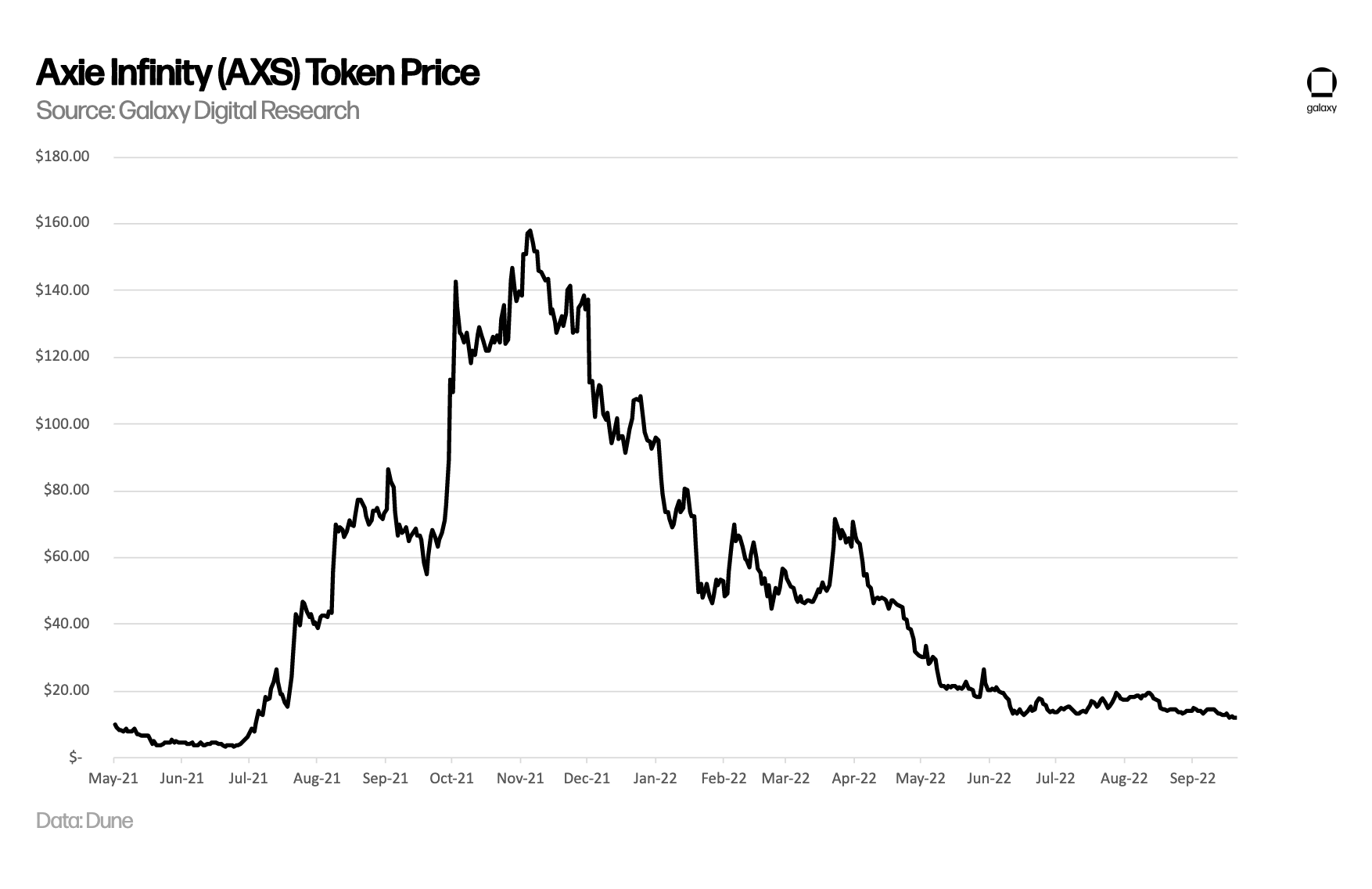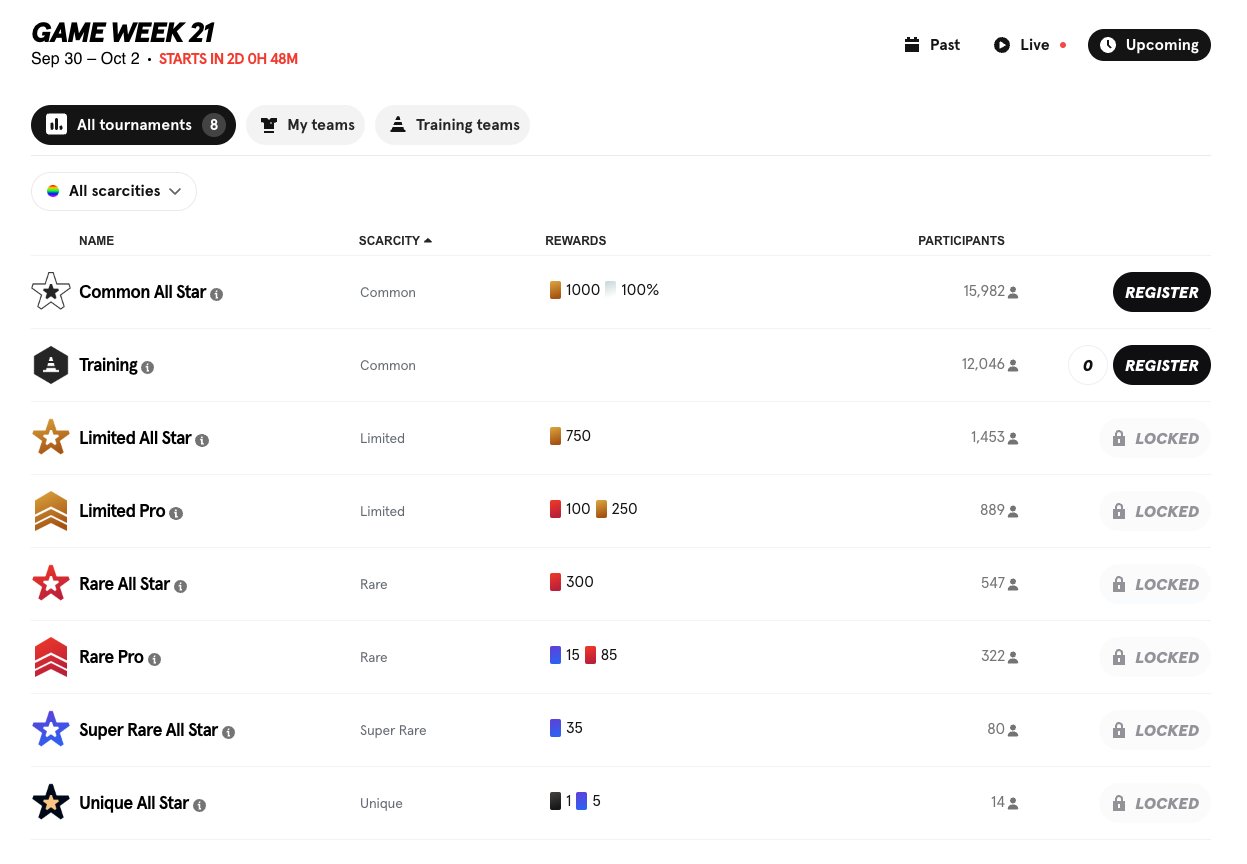Thread
Web3 Gaming Manifesto - The History of Gaming and its Web3 Future
I read 400+ pages of books, academic papers, and blogs about video game economic design so you don’t have to!
Some of these findings will surprise you🧵
1/50
I read 400+ pages of books, academic papers, and blogs about video game economic design so you don’t have to!
Some of these findings will surprise you🧵
1/50
Note: This thread is a condensed summary of the 33-page report I published today by way of @glxyresearch
Read the full report on Galaxy's website here: www.galaxy.com/research/whitepapers/history-of-gaming-and-web3-future/
While I will do my best to summarize things here, the full report has all the spicy details 🌶️
2/50
Read the full report on Galaxy's website here: www.galaxy.com/research/whitepapers/history-of-gaming-and-web3-future/
While I will do my best to summarize things here, the full report has all the spicy details 🌶️
2/50
Let's start with some fast facts 📈
-The global gaming market reached $198.4bn in 2021
-There are 2.5bn gamers worldwide
-The average gamer plays for 8 hours 27 minutes per week
-Mobile games make up 50% of industry revenue (consoles ~30%, PCs ~20%)
3/50
-The global gaming market reached $198.4bn in 2021
-There are 2.5bn gamers worldwide
-The average gamer plays for 8 hours 27 minutes per week
-Mobile games make up 50% of industry revenue (consoles ~30%, PCs ~20%)
3/50
It turns out many of “killer features” espoused by web3 game devs were debunked by the gaming industry decades ago
Industry incumbents aren’t skeptical of web3 because they “don’t get it”
Rather, they recognize that tokenizing everything is inherently a stupid idea
4/50
Industry incumbents aren’t skeptical of web3 because they “don’t get it”
Rather, they recognize that tokenizing everything is inherently a stupid idea
4/50
If you’re a web3 game developer, investor, or enthusiast, read on!
I will be covering:
-50 years of gaming history, emphasizing past experiments in video game economic design
-The psychological motivations behind gaming
-The future of web3 gaming
Let's dive right in!
5/50
I will be covering:
-50 years of gaming history, emphasizing past experiments in video game economic design
-The psychological motivations behind gaming
-The future of web3 gaming
Let's dive right in!
5/50
1978-1983: The Golden Age
-Arcades were the star of the show
-Players inserted quarters into machines, playing until they ran out of lives
-Games were engineered to be easy-to-learn and difficult to master
-This model maximized engagement and revenue for arcade operators
6/50
-Arcades were the star of the show
-Players inserted quarters into machines, playing until they ran out of lives
-Games were engineered to be easy-to-learn and difficult to master
-This model maximized engagement and revenue for arcade operators
6/50
1978-1983: The Golden Age
-Arcades made a ton of money, even adjusting for inflation!
-$5bn total revenue in 1981 = $16bn today = 8% the size of the gaming market today ($200bn)
-High scores and leaderboards motivated player to climb up the local gaming community hierarchy
7/50
-Arcades made a ton of money, even adjusting for inflation!
-$5bn total revenue in 1981 = $16bn today = 8% the size of the gaming market today ($200bn)
-High scores and leaderboards motivated player to climb up the local gaming community hierarchy
7/50
1983: The Video Game Crash
-Industry profits tanked 40%
-Too many games, too many developers, zero quality control (sounds like crypto)
-2,000 arcades shut their doors nationwide
-Atari dumped (literally) 700k unsold E.T. game cartridges in a landfill
8/50
-Industry profits tanked 40%
-Too many games, too many developers, zero quality control (sounds like crypto)
-2,000 arcades shut their doors nationwide
-Atari dumped (literally) 700k unsold E.T. game cartridges in a landfill
8/50
1985-2013: The Console Wars
-Nintendo kicked-off this era with the NES
-They birthed in-game economic features (coins in Mario, items in Zelda)
-They were obsessive over quality control by limiting 3rd-party licensing
-They dominated early on with 80% market share
9/50
-Nintendo kicked-off this era with the NES
-They birthed in-game economic features (coins in Mario, items in Zelda)
-They were obsessive over quality control by limiting 3rd-party licensing
-They dominated early on with 80% market share
9/50
1985-2013: The Console Wars
-Games were now sold as one-time, upfront purchases
-Consumers could play for an unlimited amount of hours
-Time spent playing was decoupled from the revenue generated by a game
-This led to industry consolidation and a focus on generating hits
10/50
-Games were now sold as one-time, upfront purchases
-Consumers could play for an unlimited amount of hours
-Time spent playing was decoupled from the revenue generated by a game
-This led to industry consolidation and a focus on generating hits
10/50
Early 2000s: The Advent of Online Gaming
-New game economies were being built by MMORPGs (Ultimate, Everquest, Runescape, WoW, etc.)
-Global leaderboards took the mantle from local arcade high-scores
-Online distribution (Steam) improved unit economics of game development
11/50
-New game economies were being built by MMORPGs (Ultimate, Everquest, Runescape, WoW, etc.)
-Global leaderboards took the mantle from local arcade high-scores
-Online distribution (Steam) improved unit economics of game development
11/50
Early 2000s: The Advent of Online Gaming
-Runescape players could make a killing simply by being good traders
-Rare in-game items were precursors to NFTs (Blue Party Hat)
-World of Warcraft demonstrated the viability of subscription-based business models for games
12/50
-Runescape players could make a killing simply by being good traders
-Rare in-game items were precursors to NFTs (Blue Party Hat)
-World of Warcraft demonstrated the viability of subscription-based business models for games
12/50
2010s: The Rise of Mobile
-Started with the debut of the App Store in 2008
-Ubiquitous smartphones and cheap mobile games broadened distribution
-Free-to-play became the clear path forward
-RIP portable game consoles
13/50
-Started with the debut of the App Store in 2008
-Ubiquitous smartphones and cheap mobile games broadened distribution
-Free-to-play became the clear path forward
-RIP portable game consoles
13/50
Present Day: Free-to-Play
-Tastes have shifted, people largely expect their games for free
-Campaign/story modes have fallen out of favor
-Game devs now make money via microtransactions
-Goal: attract a lot of minnows (and dolphins) with the hopes of catching a whale
14/50
-Tastes have shifted, people largely expect their games for free
-Campaign/story modes have fallen out of favor
-Game devs now make money via microtransactions
-Goal: attract a lot of minnows (and dolphins) with the hopes of catching a whale
14/50
*Pause*
We've covered the history of gaming, now we'll move onto the psychology of gaming
✅ 50 years of gaming history, emphasizing past experiments in video game economic design
➡️The psychological motivations behind gaming
-The future of web3 gaming
15/50
We've covered the history of gaming, now we'll move onto the psychology of gaming
✅ 50 years of gaming history, emphasizing past experiments in video game economic design
➡️The psychological motivations behind gaming
-The future of web3 gaming
15/50
Why do we game? It boils down to 3 primary factors:
1. Test skills
2. Act independently
3. Connect with others
Let's look at an example...
16/50
1. Test skills
2. Act independently
3. Connect with others
Let's look at an example...
16/50
How Fortnite nails the psychology of gaming:
Test skills --> Build battling, shooting, strategizing
Act independently --> Fortnite's massive, dynamic map encourages exploration
Connect with others --> Cross-platform chat, high Twitch engagement
17/50
Test skills --> Build battling, shooting, strategizing
Act independently --> Fortnite's massive, dynamic map encourages exploration
Connect with others --> Cross-platform chat, high Twitch engagement
17/50
Who plays games? Turns out everybody has their own reasons BUT they tend to fall into 4 buckets (coined by Bartle in 1996)
-Achievers: ~10% of players
-Explorers ~10% of players
-Socializers ~80% of players
-Killers ~1% of players
18/50
-Achievers: ~10% of players
-Explorers ~10% of players
-Socializers ~80% of players
-Killers ~1% of players
18/50
Games that don't build with these four buckets of players in mind are simply NGMI
Most gamers are socializers, and most socializers will never spend money in a game
*Hint: stop trying to shill NFTs/tokens as requirements to play a game*
19/50
Most gamers are socializers, and most socializers will never spend money in a game
*Hint: stop trying to shill NFTs/tokens as requirements to play a game*
19/50
Game development is a tricky balance of Challenge, Gratification, and Economic Engagement
Lately, it seems like game devs are over-optimizing for economic engagement
Check out how much CoD's online multiplayer menu has changed over the years...
20/50
Lately, it seems like game devs are over-optimizing for economic engagement
Check out how much CoD's online multiplayer menu has changed over the years...
20/50
Sinks and faucets are among the most important game-design primitives needed to balance in-game economies
Faucets dispense in-game assets, Sinks remove in-game asset from circulation
Game designers must balance new player growth with existing player base maturation
21/50
Faucets dispense in-game assets, Sinks remove in-game asset from circulation
Game designers must balance new player growth with existing player base maturation
21/50
Sinks & Faucets I:
-Utilities: Al-Kharid gate toll (Runescape)
-Casinos: Gambling mechanics (loot boxes)
-Collectibles: Extremely expensive items
-Taxation: Runescape's Grand Exchange 2% fee
-Consumables: Construction skill in Runescape
-Donations: Altruistic burn mechanism
22/50
-Utilities: Al-Kharid gate toll (Runescape)
-Casinos: Gambling mechanics (loot boxes)
-Collectibles: Extremely expensive items
-Taxation: Runescape's Grand Exchange 2% fee
-Consumables: Construction skill in Runescape
-Donations: Altruistic burn mechanism
22/50
Sinks & Faucets II:
-Staking: Staking Bored Apes for $APE
-Infrastructure: STEPN's GST <> GMT token swap fee
-Mods: Charging for a modded version of a game (meta games)
-Garbage collection: Burning valuables dropped by players (or abandoned accounts)
23/50
-Staking: Staking Bored Apes for $APE
-Infrastructure: STEPN's GST <> GMT token swap fee
-Mods: Charging for a modded version of a game (meta games)
-Garbage collection: Burning valuables dropped by players (or abandoned accounts)
23/50
Currency Distancing
The de-coupling of in-game currency from its real-world value
Benefits include: pre-loading set balances (breakage income), players buying more than intended (sunk-cost fallacy), impulse buying (decreased mental accounting)
Pictured Example: Fortnite
24/50
The de-coupling of in-game currency from its real-world value
Benefits include: pre-loading set balances (breakage income), players buying more than intended (sunk-cost fallacy), impulse buying (decreased mental accounting)
Pictured Example: Fortnite
24/50
Market Control
The degree to which an in-game economy is controlled by the developer
Candy Crush/Fortnite = Total Market Control
Runescape = Partial Market Control
STEPN = Free markets
Notice which of these companies (still) makes money?
25/50
The degree to which an in-game economy is controlled by the developer
Candy Crush/Fortnite = Total Market Control
Runescape = Partial Market Control
STEPN = Free markets
Notice which of these companies (still) makes money?
25/50
Impulse Buying
When developers introduce real-world constraints (called choke points) to progression by dangling in-app purchases as quick solutions
Also referred to as pay-to-win mechanics
Used by Candy Crush, League of Legends, Mobile Strike, and many others
26/50
When developers introduce real-world constraints (called choke points) to progression by dangling in-app purchases as quick solutions
Also referred to as pay-to-win mechanics
Used by Candy Crush, League of Legends, Mobile Strike, and many others
26/50
Limited Impact Items
In-game purchases that have limited impact on the game's mechanics
Canonical example = Fortnite skins
27/50
In-game purchases that have limited impact on the game's mechanics
Canonical example = Fortnite skins
27/50
Commodifying Captivity
Originally designed by Infinity Ward for CoD 4 --> Prestiging
Players get to signal status via prestige emblems
Game developers can increase engagement with older IP and sell map packs
Today, this is done through battle passes and continuous updates
28/50
Originally designed by Infinity Ward for CoD 4 --> Prestiging
Players get to signal status via prestige emblems
Game developers can increase engagement with older IP and sell map packs
Today, this is done through battle passes and continuous updates
28/50
*Pause*
Well done on making it this far! We're onto the home stretch
✅50 years of gaming history, emphasizing past experiments in video game economic design
✅The psychological motivations behind gaming
➡️The future of web3 gaming
29/50
Well done on making it this far! We're onto the home stretch
✅50 years of gaming history, emphasizing past experiments in video game economic design
✅The psychological motivations behind gaming
➡️The future of web3 gaming
29/50
The future of web3 gaming
What does web3 do for gaming exactly?
-Liquidity: buy/sell items
-Scarcity: items are rare
-Self-custody: your keys, your crypto (or NFTs)
30/50
What does web3 do for gaming exactly?
-Liquidity: buy/sell items
-Scarcity: items are rare
-Self-custody: your keys, your crypto (or NFTs)
30/50
-On-chain Reputation: accountless internet, sign in with wallet
-Permanence: blockchains are forever
-Audibility: prove an item is real/fake, prove who owned it
-Decentralized Governance: players have a say
31/50
-Permanence: blockchains are forever
-Audibility: prove an item is real/fake, prove who owned it
-Decentralized Governance: players have a say
31/50
-Payments: seamless with fast finality
-Business Model Innovation: use tokens to pre-sell (though this can be problematic)
-Composability: games can interact via blockchain metadata
32/50
-Business Model Innovation: use tokens to pre-sell (though this can be problematic)
-Composability: games can interact via blockchain metadata
32/50
Where is web3 gaming today?
tl:dr very very very early
GameFi tokens are down ~75% from all-time highs
web3 games are being built on a bunch of random chains (little consolidation)
33/50
tl:dr very very very early
GameFi tokens are down ~75% from all-time highs
web3 games are being built on a bunch of random chains (little consolidation)
33/50
Why did Play-to-Earn fail?
Liquidity is both a blessing and curse
Open web3 economies enabled mercenary users on games like Axie to farm tokens and dump them into the market
Asset issuance (supply) outpaced asset demand (typically driven by game utility)
34/50
Liquidity is both a blessing and curse
Open web3 economies enabled mercenary users on games like Axie to farm tokens and dump them into the market
Asset issuance (supply) outpaced asset demand (typically driven by game utility)
34/50
What does a successful web3 game look like?
Sorare's NFT-based fantasy sports games offer some insights
NFTs are not a requirement in Sorare's fantasy sports
Rather, NFTs enable higher-level tournament play
We expect this model to be emulated by many others
35/50
Sorare's NFT-based fantasy sports games offer some insights
NFTs are not a requirement in Sorare's fantasy sports
Rather, NFTs enable higher-level tournament play
We expect this model to be emulated by many others
35/50
What does web3's gaming future look like?
We have a rich history of gaming to draw on + learnings from early experiments in web3 gaming.
Here are the key takeaways from this report 👇
36/50
We have a rich history of gaming to draw on + learnings from early experiments in web3 gaming.
Here are the key takeaways from this report 👇
36/50
Tokens later, game first. Web3 is best suited to augment fun games, not masquerade as the star of the show. Gamers today are skeptical of web3 primitives and happy with the status quo. We need to show this skeptical user base the merits of crypto/NFTs with killer games.
37/50
37/50
Major game publishers are cautious about web3. This is similar to when legacy game developers were slow to embrace mobile in '08. Smart web3 game developers will capitalize on this lack of competition from industry juggernauts. Use this window of opportunity wisely.
38/50
38/50
Don't hold your breath for composability. Seemingly every week, a new web3 game is being built on a new blockchain ecosystem. Assume that none of these chains will be interoperable with one another. Focus on other web3 use-cases for now...
39/50
39/50
Non-transferable NFTs will be key for web3 games. Player achievements and unified logins through wallets can enable a player’s history to travel with them across platforms and game environments. There is a treasure trove of on-chain metadata waiting to be unlocked 🔐
40/50
40/50
Meta games will reign supreme. Think games built on top of other games. The Sandbox is an early example that's fully embracing this approach. Meta games are key to diversifying economies tied to an ecosystems's token and can help absorb token issuance with organic demand.
41/50
41/50
Bridges will be a key piece of web3 gaming infra. Web3 game devs are already building across dozens of competing, non-interoperable blockchains. Bridges will be necessary to support any cross-chain interoperability. (unless we're cool w/ using exchanges as bridges)
42/50
42/50
More market control = more money. Legacy game publishers will be reluctant to give up control over their game economies due to the financial stakes at play. One potential solution would be a semi-open economy where publishers unify multiple games on a single app chain.
43/50
43/50
Tournaments are a compelling use-case for NFTs/crypto. This model works because it positions crypto as an aspirational asset instead of a pre-requisite. As players get comfortable with games, they can choose to engage with higher-level tournaments.
Example: Sorare
44/50
Example: Sorare
44/50
Not everything needs to be on-chain. Good web3 games will blend off-chain and on-chain digital assets. Most gamers today don't spend money in games. Web3 doesn't magically change this historical precedent. Reserve on-chain transactions for the economically engaged.
45/50
45/50
DeFi will unlock new revenue opportunities for developers. Imagine competing game studios collaborating to run liquidity pools on AMMs, sharing fees generated on swaps of their competing tokens. Both developers and gamers benefit from the composable ethos of DeFi and web3.
46/50
46/50
Tl:dr: closing thoughts
Build a great game first, then consider the best monetization scheme congruent with that killer game before adding in web3 features
The most profitable games in history entice players with compelling gameplay that is completely free-to-play
47/50
Build a great game first, then consider the best monetization scheme congruent with that killer game before adding in web3 features
The most profitable games in history entice players with compelling gameplay that is completely free-to-play
47/50
Tl:dr: closing thoughts pt 2
Over-optimizing for web3 features attracts mercenary playerbases that detract from a game's community
Durable game economies will balance digital asset supply issuance with demand via sinks/faucets, market control, etc.
48/50
Over-optimizing for web3 features attracts mercenary playerbases that detract from a game's community
Durable game economies will balance digital asset supply issuance with demand via sinks/faucets, market control, etc.
48/50
You made it! In this thread, we successfully covered:
✅50 years of gaming history, emphasizing past experiments in video game economic design
✅The psychological motivations behind gaming
✅The future of web3 gaming
Read the full report here:
www.galaxy.com/research/whitepapers/history-of-gaming-and-web3-future/
49/50
✅50 years of gaming history, emphasizing past experiments in video game economic design
✅The psychological motivations behind gaming
✅The future of web3 gaming
Read the full report here:
www.galaxy.com/research/whitepapers/history-of-gaming-and-web3-future/
49/50
That's a wrap!
If you enjoyed this thread:
1. Follow me @sal_coin for more great web3 content
2. RT the first tweet below to share this thread with your audience. It really helps 🙏🏽
Thanks for reading! DMs are open if you have any comments or questions.
50/50
If you enjoyed this thread:
1. Follow me @sal_coin for more great web3 content
2. RT the first tweet below to share this thread with your audience. It really helps 🙏🏽
Thanks for reading! DMs are open if you have any comments or questions.
50/50
Mentions
See All
Ryan Selkis @twobitidiot
·
Dec 1, 2022
nice this is great thanks.


